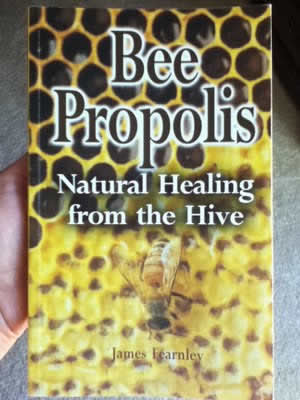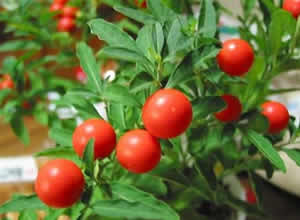Boswellia (Indian frankincense), is a moderate to large sized branching tree of family Burseraceae grows in dry mountainous regions of India, Northern Africa and Middle East. The main active constituents of boswellia serrata are the boswellic acids, most importantly AKBA (3-O-acetyl-11-keto-B-boswellic acid). AKBA has showed many important inflammation-modulating properties in preclinical research. Animal-based and pilot clinical studies support the potential of BSE (Boswellia serrata gum resin extract) for the therapy of a variety of inflammatory diseases like inflammatory bowel disease, osteoarthritis and rheumatoid arthritis.
Boswellia and Inflammatory Bowel Disease
Various researches have shown boswellia serrata to be effective in people suffering from bronchial asthma, with improvements noted in 70% of cases, both in symptoms and in biochemical parameters, as well as in the therapy of chronic inflammation of intestinal mucosa. A 2008 comprehensive review of the literature reported in the “British Medical Journal” found that B. serrata research was encouraging and showed clinical effectiveness for a number of highly inflammatory health problems; Crohn’s disease, colitis and arthritis. Germans with IBD (inflammatory bowel disease) placed boswellia extract among the top three most useful CAM therapies by IBD patients in Germany, along with probiotics and acupuncture. A long with acupuncture and probiotics, boswellia serrata extract helps treat inflammation in the bowels by inhibiting TH1 cytokine production while encouraging TH2 production.
Scientists explored boswellia serrata extract in animals with experimentally induced inflammatory bowel disease. The animals showed tissue injury and adherence of white blood cells to the gastrointestinal lining. When the animals received B. serrata extract, they exhibited less inflammation and destruction of gastrointestinal tissue. In another study examined boswellia serrata in an animal model of ulcerative colitis. They found that the B. serrata extract protected the colon by significantly lessening disease activity, as measured by reduction recruitment and adherence of white blood cells as well as platelets in the inflamed colon. A clinical trial found that patients with ulcerative colitis taking (350 mg three times daily) of boswellia extract 3 times daily for 6 weeks had similar improvement in symptoms and the severity of their disease as people with ulcerative colitis taking the medication sulphasalazine. Overall, 82% of participants receiving boswellia, along with 75% of participants taking sulphasalazine, went into remission. A follow-up study of chronic colitis people taking gum resin of boswellia serrata (900 mg daily in 3 divided doses for 6 weeks) and sulfasalazine again demonstrated similar improvements. Additionally, 14 of 20 people treated with boswellia went into remission compared to 4 of 10 patients treated with sulfasalazine. In a clinical trial included 44 people treated with boswellia serrata extract and 39 patients treated with mesalazine. Between enrollment and end of treatment, the Crohn’s Disease Activity Index decreased significantly with both B. serrata extract and mesalazine. In a 2001 edition of the journal Zeitschrift für Gastroenterologie, researchers determined that B. serrata appears to be superior over the commonly used anti-inflammatory medication mesalazine.
 Standardised extract of
Standardised extract of  An in vitro study found propolis to have a more potent cytotoxic effect against human lung adenocarcinoma (A549) and human fibrosarcoma (HT-1080) cells compared to 5-fluorouracil. A study reported in “Nutrition and Cancer” in 2003 revealed that propolis stimulated apoptosis and necrosis of lung cancer tumors in mice. According to a study reported in the Feb 2004 issue of the “American Journal of Biochemistry and Biotechnology“, propolis contains therapeutic compounds that can kill MCF-7, a breast carcinoma cell. In an animal-based study reported in 2005 in Veterinary Research Communications, scientists found that caffeic acid reduced the number of lung tumors in mice.
An in vitro study found propolis to have a more potent cytotoxic effect against human lung adenocarcinoma (A549) and human fibrosarcoma (HT-1080) cells compared to 5-fluorouracil. A study reported in “Nutrition and Cancer” in 2003 revealed that propolis stimulated apoptosis and necrosis of lung cancer tumors in mice. According to a study reported in the Feb 2004 issue of the “American Journal of Biochemistry and Biotechnology“, propolis contains therapeutic compounds that can kill MCF-7, a breast carcinoma cell. In an animal-based study reported in 2005 in Veterinary Research Communications, scientists found that caffeic acid reduced the number of lung tumors in mice. In a study published in Indian Journal of Physiology and Pharmacology, ashwagandha was found to be as effective as diazepam for cases of anxiety and depression associated. In a trial, 30 patients suffering from anxiety neurosis were administered a dose of 40 ml per day for a month. The research concluded that most of anxiety symptoms, panic attacks and phobia were significantly relieved. Oral administration of ashwagandha for 5 days suggested anxiety-relieving effects similar to those achieved by the anti-anxiety drug
In a study published in Indian Journal of Physiology and Pharmacology, ashwagandha was found to be as effective as diazepam for cases of anxiety and depression associated. In a trial, 30 patients suffering from anxiety neurosis were administered a dose of 40 ml per day for a month. The research concluded that most of anxiety symptoms, panic attacks and phobia were significantly relieved. Oral administration of ashwagandha for 5 days suggested anxiety-relieving effects similar to those achieved by the anti-anxiety drug